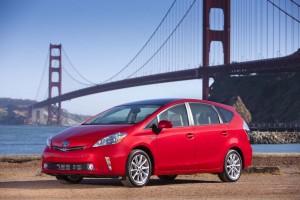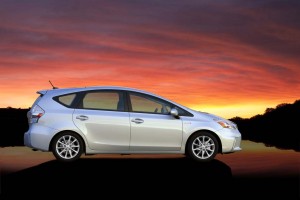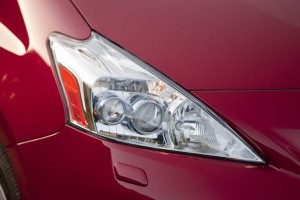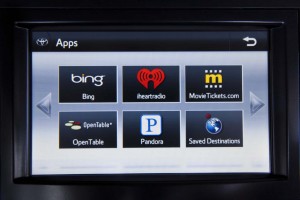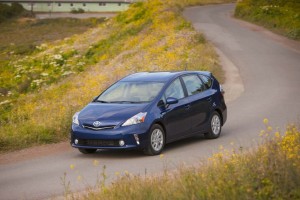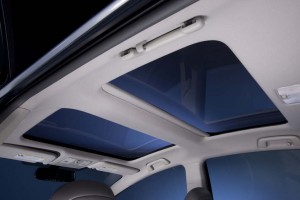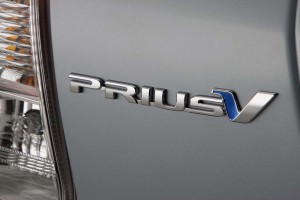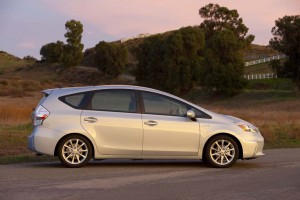There was a sense of déjà vu as we walked up to the new hybrid parked outside the Eagle Crest Conference Center. But no wonder. All similarities are purely intentional when it comes to the new 2012 Toyota Prius v, the first addition to what is soon to become an extended family of Prius-badged hybrids.
It’s been 11 years since the original Prius made its debut, promising an under-the-hood revolution that seems especially timely today with fuel prices nudging upwards towards record levels. Surprisingly, though, that revolution never quite seems to take off. Despite $4-a-gallon gas, hybrids today account for barely 3% of the total U.S. market and, all told, if you added them all up their collective sales didn’t match the May numbers for Detroit’s three most popular muscle cars, the Ford Mustang, Chevrolet Camaro and Dodge Challenger.
Okay, maybe May wasn’t a great example, as Japanese makers like Toyota were still struggling with production cuts caused by the March 11 earthquake and tsunami in Japan. Sales of the Prius alone were off as much as 40%, company officials lament, due to supply shortages. Indeed, for the moment, there’s barely a 4-day supply of the original Prius in U.S. showrooms. The fact is, while American motorists have yet to embrace hybrids, on the whole, they’re in love with the distinctive little Toyota, which now accounts for about 50% of the gas-electric models sold in the U.S. (For more, Click Here.)
So, is it any surprise that when Toyota decided to roll out an assortment of new standalone hybrid models, like the new Prius v, that they would share the familiar and popular badge – and maintain a very familial appearance?
Toyota is planning to roll out at least 10 new hybrids in the next two years, but only a select group will share the Prius badge, starting with the Prius v. Look for it to reach dealer showrooms around October, about two months later than originally planned, explains marketing chief Ed LaRoque, due to the impact of the earthquake. The v will be followed soon afterwards by a plug-in version of the “classic” Prius, Toyota’s first model to use lithium-ion batteries. Early next year, keep an eye out for the Prius C, a compact and low-priced hybrid targeting entry-level buyers who’d like to go green.
The basic shape of the 2012 Toyota Prius v echoes that of the classic model, with a gentle curve sweeping up off the nose and racing back towards a new, roof-mounted spoiler. Indeed, aerodynamics were critical to the new model, much as they were the original, explains Kirk Forsht, of the University of Toyota.
The current Prius classic has an impressive 0.25 drag coefficient. Despite its added length and width, as well as the new wagon-like rear end, the Prius v still has a 0.25 Cd, about as good as it gets for something this size. Along with the rear spoiler, Toyota designer incorporate new “aero corners” on the rear of the v, as well as fins on the headlamps to channel airflow.
Though based off the same basic platform, there’s not a single shared body panel between the Prius and Prius v. That includes the new model’s large Panoramic sunroof – which also reveals the development team’s focus on reducing weight, a major enemy of fuel efficiency. The sunroof relies on a new, clear resin that is significantly lighter than a traditional glass design. Even the SofTex seat fabric offered on the up-market v variant was chosen because it was lighter than leather.
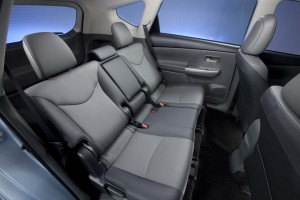
The rear seats have a 60/40 split/fold, but also recline and slide. Toyota opted against a 3-row model for the American market.
For many buyers, the big selling point for the 2012 Toyota Prius v will be its fuel economy of 44 mpg City, 40 Highway and 42 Combined –the City number coming in 2 mpg above the maker’s initial estimate. That’s still short of the 51/48 City/Highway rating for the standard hybrid – but on the plus side there’s a lot more room.
The new model is about 3 inches longer, with a 6-inch longer wheelbase. It’s an inch taller and wider, and offers significantly more leg, hip and shoulder room for all five passengers. (And unlike other world markets, American buyers will only be offered a two-row, 5-seat version of the Prius v.)
There’s 97.2 cubic feet of space in the passenger compartment, about 3.5 cf more than the classic hybrid. And there’s 58% more cargo space, at 33.4 cubic feet – so much, that you’ll find more room for your “stuff” in the cargo compartment with 5 people onboard than you would in the regular Prius with the rear seats folded down.
Toyota also aimed to deliver a more “refined and substantial” vehicle, as analyst Aaron Bragman suggested. There’s a rice paper-like graining to the soft-touch materials on door and instrument panel and a bit more elegant overall look and feel.
That said, we still sense some of the corner-cutting that has plagued Toyota in recent years. For something in this price range we’d expect a bit more elegance and attention to detail. To our taste, the center-mounted gauge cluster is also a negative, though it’s laid out better than those used on competitors like the Honda Civic and Mini. The quirky Prius shifter, carried over from the original model, also takes time to get used to.
The hybrid’s seats are reasonably comfortable though not overly supportive. Our co-driver complained that he felt like something was jabbing him in his lower back, meanwhile. The rear seats offer ample leg room even for large passengers, and they not only offer a 60/40 split/fold feature but can slide and recline.
Out of sight is the Hybrid Synergy Drive system largely borrowed whole from the Prius classic. It’s based around a 1.8-liter inline-four mated to an electric motor that can either supplement the gas engine or even drive the vehicle for short distances at low speeds solely on battery power. Energy collected during braking and coasting is stored in the Prius v nickel-metal hydride battery pack.
A few modest changes were made to the driveline, in part to help it maintains its cool, but also to draw a bit more power out, with a revised final drive ratio, reflecting the added mass of the larger Prius v.
Heading out for a jaunt through Michigan farm country we found the Prius v to be reasonably peppy, if not exactly thrilling. But for those who expect hybrids to be the modern equivalent of those ‘80s-era high-mileage stone ponies, the Prius will deliver a pleasant surprise. As with the original model – and as with any other vehicle using a CVT transmission – it takes time to get used to the “rubber-banding” effect, where engine speed seems to disconnect from the actual acceleration of the vehicle.
Contrary to conventional wisdom, there are some sharp corners and even a few hills in Southeast Michigan, and we charged into every one we came upon. To its credit, the suspension on the 2012 Toyota Prius v proved surprisingly stable, with pleasantly little body roll.
One of the more interesting features of the new model is the introduction of pitch-and-balance control, a system that subtly adjusts wheel speed in order to smooth out a rolling road surface – something you’re more likely to experience in places like Southern California.
The new technology is just one of several systems Toyota will offer on the 2012 Prius V. The hybrid wagon will also get seven airbags, optional active cruise control and pre-collision technology – and Toyota’s new entune.
The infotainment system was developed as an answer to Ford’s popular sync and will likewise give a motorist voice control over a variety of applications, such as setting a destination for the navi system. More significantly, it will introduce a n expanded link between the car and a smartphone, allowing a motorist to access such apps as the Pandora music network and Open Table, a restaurant reservation service. As with most consumer electronics, Toyota promises an owner will be able to update entune online rather than having to wait to trade in the vehicle.
The base Prius v will come with a 6-inch LCD screen. Navigation can be added by stepping up your model choice. The top-line v will get a 7-inch high-res monitor. The upgraded audio system, meanwhile, is the new JBL GreenEdge. Its high-efficiency speakers are not only lighter but require less power to produce a given level of volume, meaning a lower draw on the Prius v battery.
Toyota won’t set pricing on the 2012 Prius v until closer to the autumn launch, though LaRoque hints it will be “a little higher than the current Prius average transaction price.” Considering consumers have been paying as much as $3,000 more for the Prius, in recent months, due to the shortages, we’re not sure precisely what that translates into, but something in the high-$20,000 for the base 2012 Toyota Prius v seems likely.
Is it worth it? There are plenty of vehicles now getting 40 mpg on the highway, though few come close to the new hybrid’s 44 urban numbers, so for those who spend a lot of time stuck in traffic, it could be a winner. And it is a fair bit bigger than most of the higher mileage models now coming to market, such as the Ford Fiesta, Chevrolet Cruze Eco and Hyundai Elantra.
American buyers routinely say they’ll look at hybrids when next in the market, then wind up buying something more conventional. The exception is the Prius. And Toyota is betting that by spreading that name over some of its newer models it will give them a leg up on the rest of the market’s gas-electric offerings. We’ll have to wait until later this year to see if that strategy works.

